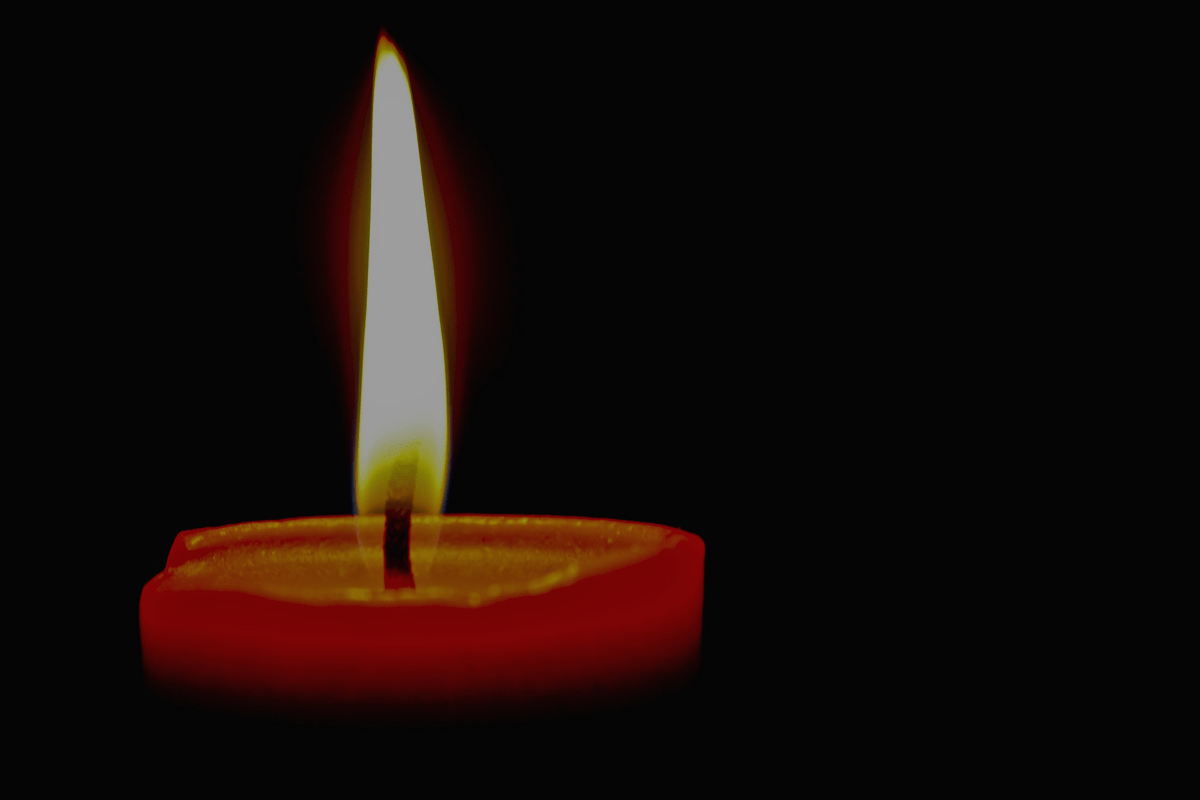
Candle Making
The rules
Rule Number one – There are no Rules, with the exception of safety rules. Candle making is about experimentation. It is Chemistry, Art, Imagination, and Magic rolled into one. There are many factors that affect the finished candle – wick, wax, temperature, additives, type of mould, dye, scents, etc… Always consider candle recipes a starting point for your own experimentation.

Record keeping
One thing often overlooked by candle makers of all experience levels is the importance of keeping records. It would be a shame to develop your “ideal candle”, and not be able to reproduce your results. Keeping a notebook handy in your candle making area is very helpful. Some things to consider for your records are:
- Type and quantity of wax.
- Type and quantity of additives such as stearine, vybar, lustre crystals, etc…
- Type and quantity of dye.
- Type and quantity of scent.
- Type and size of wick.
- Type and quantity of mould.
- Pouring temperature.
Tool list
- Double boiler – may be a commercial double boiler, or use a coffee can in an old pot. A seamless pot is highly recommended though.
- Thermometer – a candle or candy thermometer that clips to the pot work fine. Do not even consider making candles without a thermometer.
- Pot holders or pliers – depending on whether you are using a pot or a can.
- Moulds
- Mould-release – silicone spray is easiest to use, but peanut oil works well also.
- Cutter for wicks.
- Wooden spoon – for stirring wax.
- Dowel for poking relief holes in moulded candles.
- Baking pan at least eight inches square – numerous uses, but mainly for levelling the bottom of moulded candles.
Wax
There are many waxes available for candle making. I recommend that beginners start with a general purpose paraffin wax which melts in the range of 57.2 – 62.7 C (135 – 145 F). As you progress into candle making, you will probably want to start experimenting with other types of waxes such as microcrystalline, beeswax, bayberry, and other melting points of paraffin. For now get to know the properties of one readily available wax.
Additives
The variety of candle additives commonly available has grown tremendously in the past 2 decades. Here are descriptions of the most common additives:
Stearine
Also called stearic acid. This has been the standard paraffin additive for a very long time. Used to make wax harder, release from the mould easier, and increase the opacity of the wax. Use from five to thirty per cent (three to five tablespoons per pound of paraffin). This is the easiest additive to find, and I recommend it for beginners.
Vybar
Available in low melting point (Vybar #260) and high melting point (Vybar #103). More economical to use than stearine. Improves colour and scent retention. Difficult to find, and doesn’t always release from mould easily. Use one to five per cent.
Plastics
There are a variety of plastic additives (mostly polyethylenes) that will improve gloss, opacity, translucency, strength, and hardness. Marketed under a variety of names such as lustre crystals, opaque crystals, translucent crystals, etc… These are readily attainable but are difficult to use due to their high melting point. Must be melted separately, then added to the melted wax. General usage is from one-half to two per cent depending on the product. Not recommended for beginners.
Wick
There are more than 35 different wicks on the market, although only about six of these are commonly available to retail candle supply purchasers. Wicking can be broken down into three categories – Flat, Square, and Wire Core. Flat and square are used for moulded and dipped candles, wire core for floating, votive, and container candles.
The starting point for wick selection is to match the wick to the mould diameter. For a small mould use a small wick, etc… If a test burn of the finished candle shows a minimal wax pool the wick is too large for your wax formula. If your wax pool is drowning the wick by causing it to go out or have a small flame, go to a larger wick. The wick size is the easiest way to adjust how your candles burn, and it is important to keep in mind that changing your wax formula may require changes in wicking as well. If you don’t have another size wick handy, adjusting your wax hardness with more or fewer additives may help it burn correctly.
Dye
There are 2 main ways to colour candles, dye, and pigments. Most candle making is done with dye. Pigments are very concentrated colours primarily used for over dipping and carved candles. As a general rule, never use pigments to colour the core of a candle – the particles of pigment will clog the wick. Although it is common to see candle making instructions using crayons for colour, this can also clog the wick. For the best results always use a dye specifically made for colouring candles. If a really deep colour is needed, consider an over dip with that colour – too high a colour concentration in the core of the candle may cause burning problems. Wax colours will be lighter than they appear in the melting pot. To get an idea of the finished colour place a drop of wax on a piece of white paper. An even better test is to put a half inch of wax in a paper cup and place it in the freezer, this will give you the exact finished colour in a hurry. Keep in mind that wax additives affect the final colour.
Scent
Candle scent is marketed in 2 forms – liquid scent oil, and scent blocks. Although the liquid scent is a higher outlay in cost, I feel it works far better than scent blocks. As a general guideline follow the manufacturer’s directions. Higher scent concentrations can usually be used, however, too much scent can ruin a candle. Use caution with acrylic moulds since high percentages of scent may ruin the mould.
Moulds
There are a huge variety of commercial moulds on the market, as well as an almost infinite number of everyday items that make good moulds. The instructions that follow will be for using a standard commercial mould. In other words, a mould that makes the candle upside down. My personal recommendation is to get a one piece metal mould as these tend to be the easiest and most durable to use. Here is a basic rundown of mould types:
- Metal Moulds – Available in a broad variety of shapes, these are simple to use and relatively durable.
- Acrylic Moulds – Available in a variety of geometric shapes and sizes. They are easy to use but are easily scratched. Use caution as too much scent may damage these.
- Two-Piece Plastic Molds – Available in a large assortment of novelty shapes. These are more difficult to use even though most beginners start with them.
- Rubber Molds – These are available in latex and vulcanized rubber. Both produce seamless candles, with the latex requiring a little more effort to use. Vulcanized moulds tend to be expensive.
- Top Up Molds – these are moulds that are used the opposite of most candle moulds – with the top of the mould being the top of the finished candle. Many floating candles and votive moulds are used this way. These are easy to recognize by their lack of a wick hole.
- Flat Molds – Used to make wax appliques and hanging ornaments. Generally, these don’t produce good candles but do make nice decorations to embellish your candles with.
When selecting your first mould, try to keep it simple. Read and familiarize yourself with the mould manufacturers instructions. The step by step instructions below are general guidelines for using a metal mould and you should modify them for your own situation.
Making a basic moulded candle
Step 1
Put enough wax in your melting pot to fill your mould. If you don’t have a scale to use, a good estimate may be made by dividing the slab into even sections. For example, divide an 11 pound (roughly 5 kg) slab into 11 equal sections to get one pound (0.45359237 kg) of wax. Add stearine at the rate of two-three tablespoons per pound of wax. Start heating in a double boiler.
Step 2
While your wax is heating, apply your mould-release (gently – a little goes a long way) then wick the mould. Follow the manufacturer’s instructions for this. Prepare a water bath by submerging the empty mould in water and adding water until the level is about one-half inch below the mould top. Take care not to get any water in your mould or wax – it will ruin your candle. It is easiest to add a mould weight at this time, typically a piece of lead wrapped around the base of the mould. A more difficult alternative is placing a heavy weight atop the filled mould once it is in the water bath – you must hold it down until the weight is in place though.
Step 3
When wax reaches the pouring temperature (refer to manufacturer’s instructions for optimum pouring temperature), shut the heat and add dye (optional). Stir until well dissolved. If desired add scent and stir well immediately before pouring. A word of caution, an excessive amount of dye may cause the candle to burn poorly. An excessive amount of scent may ruin the mould and/or ruin the finished candle. Set aside remaining wax for step 5.
Step 4
Pour the wax into the mould slowly but smoothly. On taller moulds, it sometimes helps to tilt the mould to prevent air bubbles from excessive agitation. Always wear heavy work gloves when handling moulds filled with hot wax – especially metal moulds. Wetting the gloves will give even more protection if needed. Gently tap the sides of the mould, and allow 45 seconds for the air bubbles to rise. Place the mould in the water bath.
Step 5
Periodically punch one or more holes alongside the wick using a dowel or another long, narrow implement. As the wax cools it shrinks, and punching holes prevents it from shrinking away from the wick causing air pockets. the larger the candle the more times you will need to repeat this. Fill the void left by shrinkage taking care not to pour above the original level of the wax. On very large candles, it may be necessary to repeat this step more than once.
Step 6
Allow the candle to cure fully before attempting to remove from the mould. The larger the candle the longer it takes. If the candle does not easily slide out of the mould, place it in a refrigerator for five to ten minutes. If you still have difficulty removing it, place in the freezer for no more than five minutes. If all else fails, heat the mould with hot water until the candle will come out (this usually ruins the candle). Never pry or scrape the wax out of the mould.
Step 7
If refrigeration was used to unmold the candle allow it to return to room temperature before proceeding. The final step is to level the base. Place your baking pan atop a pot of boiling water. Holding the candle by the wick, allow it to touch the pan until the base is flat and level.
Step 8
Enjoy your candle. Watch how it burns, and on your next one adjust your recipe to make it burn better if necessary. I would also like to remind you to keep an accurate record of your formula.
